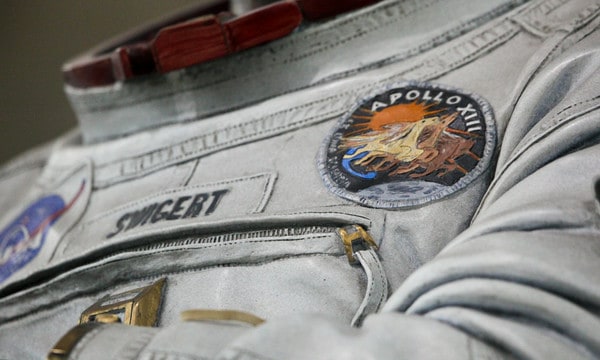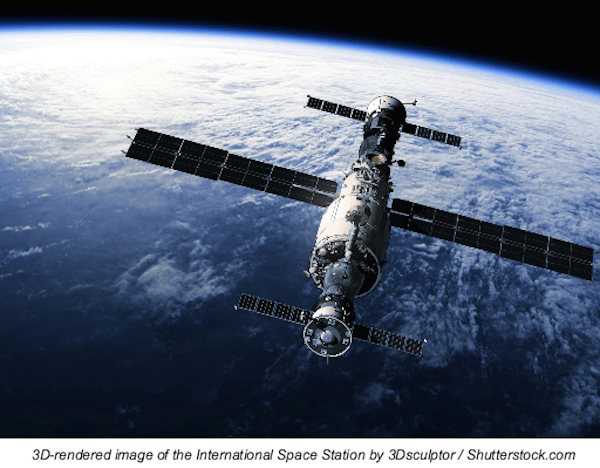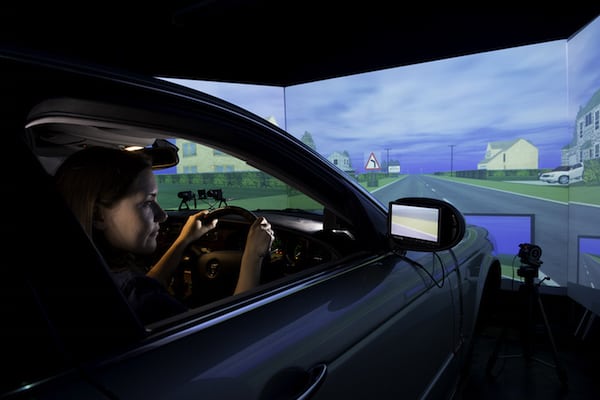Jason Ford
News editor
Denver International Airport can be quite confusing to the uninitiated but one thing apparent to the lost traveller is the facility’s appreciation of Colorado’s aviation pioneers, notably the statue of astronaut Jack Swigert.
Swigert was the command module pilot on Apollo XIII, the NASA mission that ran into significant difficulties when the oxygen tank feeding the ship’s fuel cell exploded, resulting in the command module losing its normal supply of electricity, light and water.
As well as being misquoted, Swigert’s message, "Houston, we have a problem here" is also one of the most recognisable and iconic from the modern era and his statue – fashioned by the Lundeen brothers - stands resplendent at Denver Airport’s B Gates.

Swigert’s space suit is adorned with the badges that marked the mission and now NASA Tournament Lab (NTL) has issued a logo design challenge to create a mission badge that graphically conveys the key theme of space exploration and on-demand manufacturing and repair.
The logo design challenge is being held in partnership with Freelancer.com and the winning design will be used for NASA´s In-Space Manufacturing (ISM) project, which is developing the manufacturing capabilities that will provide on-demand operations during transit and on-surface NASA Exploration Missions.
According to publicity material, “ISM supports a “make it, don’t take it” approach and the key capabilities being developed in the project include a 3D printing Fabrication Laboratory (Fab Lab), which can manufacture parts in space using multiple materials to reduce mass and waste. In 2015, the ISM project made history by sending the first 3D printer to the International Space Station (ISS) and manufacturing the first parts ever in space.”
Full details of the NASA In-Space Manufacturing Logo Challenge can be viewed here. A detailed insight into the challenges of ‘making it, not taking it’ can be found in The Engineer’s February 2016 cover story titled Made in space: new production frontiers.

The Engineer reports on a myriad of technologies but one that appears to polarise its readership is that of autonomous vehicles, with the naysayers bemoaning the lack of clarity on issues such as safety and insurance, and the pro-camp looking forward to the day when they can kick back and enjoy the driverless experience.
Do you, however, think you could tell an autonomous car apart from a manually driven car as you go about your business on the highways and by-ways of GB?
This is a question being asked at Southampton University’s Transportation Research Group, which is looking for members of the public to take part in a study to help understand people's perceptions of automated vehicles.
The university said: “Participants will be required to view a series of four to five second videos of a car (a white Tesla Model S) making lane changes, while driving down the motorway, and to decide whether it is being driven by a human driver or a computer.
“The survey, which can be done from any computer or mobile device, takes about 10 minutes in total.”
Participants will need to have held a full driving license for at least one year and have had regular experience driving on the roads.
Project leader Prof Neville Stanton said: "The study will help us to understand the effect of new vehicle automated systems on driving behaviour and cognitive abilities. We hope that the results will help to detect potential problems before the automated systems are launched on the market."
Click on the following address to take part in the study: https://www.isurvey.soton.ac.uk/19791

There’s a strong likelihood that a number of you be attending MACH 2016 this week, and regular visitors to our sister publication MWP Advanced Manufacturing will be fully abreast of what to expect at the Manufacturing Technologies Association’s biennial exhibition that brings the best manufacturing technology innovations and developments under one roof at the NEC.
As Will Stirling points out in his article, manufacturing faces an uncertain year - see the on-going oil and gas crisis, a slow down in output and exports, and the EU referendum – but there are still plenty of reasons to maintain a positive outlook as interviewees from companies including Delcam, EOS UK, and XYZ Machine Tools point out.





April 1886: the Brunkebergs tunnel
First ever example of a ground source heat pump?